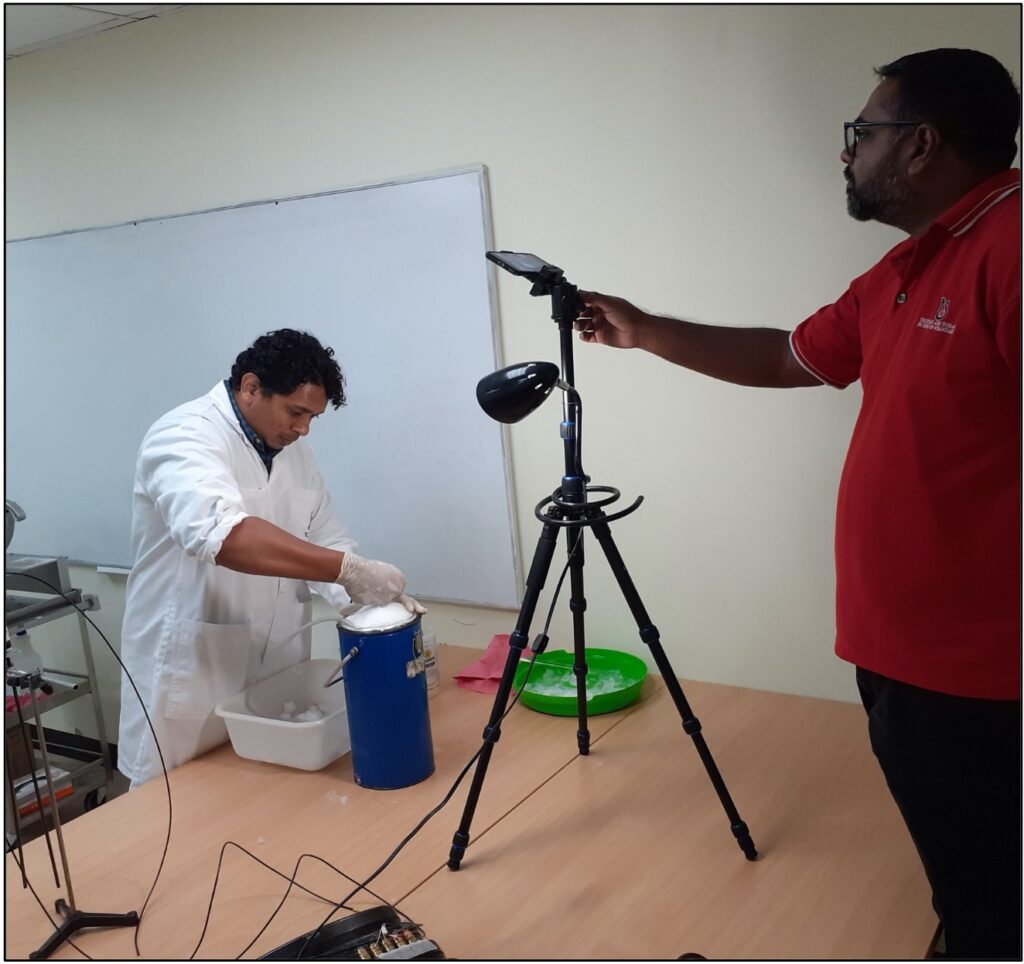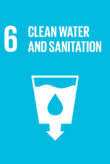Restrictions on travel and meetings in the wake of the covid pandemic have had a negative impact on lab expert training. Hands-on lab training sessions have suffered particularly, as they require the trainer and the trainees to be present on site. To make virtual collaboration for this type of training possible as well, virtual alternatives to on-site tasks, access to laboratory equipment and practical exercises need to be developed.
To address this challenge, the PTB Capacity Development working group has cooperated on a pilot training session titled M4M Ice Point Measurement with the Caribbean Reference Laboratory (CaRL) for Temperature, which is located at the Trinidad and Tobago Bureau of Standards (TTBS). CaRL supports seven Caribbean national metrology institutes through a mentoring program and is now able to provide hands-on training online. After participating in the programme organised by the PTB Capacity Development working group in February 2022, three trainers – Avinash Boodram and Francis Hamilton from TTBS and Dr. Diana Jehnert from ZMK & ANALYTIK GmbH – made use of different virtual methods to conduct the hands-on laboratory training session. The pilot consisted of seven online training sessions of 2-3 hours each, which took place from March to June 2022 and were attended by about twenty researchers from NMIs in Antigua & Barbuda, Grenada, Guyana, St. Lucia, Belize, Haiti and Dominica. Dr. Diana Jehnert stated, “Organising the training in a team of three trainers has been very enriching. The fact that two trainers are from the same region as the trainees has been another benefit.” All participants were issued a virtual certificate during the closing session on June 2nd.
Each step from planning the training to the end of its implementation was evaluated and documented with respect to the entire process by PTB’s Capacity Development working group. A compendium of outputs was developed to support trainers and project coordinators in implementing virtual hands-on laboratory training. This included a detailed organising checklist with documents including an example Moodle room, a pre-assessment questionnaire and terms of reference for virtual trainers. Another output was a Moodle room called Virtuality Training, which included recordings of all five Virtuality Training sessions on topics such as pre-recorded instructional videos, virtual laboratories, interaction between trainers and trainees as well as exercises in online training.

The pilot project proved that several virtual alternatives exist to on-site training tools. Accordingly, in the M4M Ice Point Measurement session, laboratory tasks were carried out by trainers and trainees either via livestream with a mobile phone or by pre-recording and editing a video. For this, between two and four people were needed in the lab. A preparatory survey on Moodle served as a pre-assessment tool to give the trainers an overview of the trainees’ capabilities and their laboratories’ capacities. The Moodle room served as a digital home for all training materials, information, assignments and feedback.
However, the extent to which virtual hands-on training can replace on-site hands-on training is not yet fully clear. Feedback gathered after training revealed that most trainees found virtual hands-on training to be ”better in some ways and worse in others”. Respondents praised the greater flexibility and on-demand nature of virtual hands-on training, which can make retaining information easier. Another benefit mentioned was the fact that participants could perform the procedures on their own laboratory equipment, which they were familiar with. On-site training sessions, on the other hand, ensured more direct interaction with the trainers and the other participants. Moreover, trainers could observe the trainees from beginning to end and give immediate feedback on all aspects of the process. The pros and cons of the different modes were compiled in a new PTB publication Training in the Laboratory Going Virtual or Being On-site. How to Decide to serve as an aid for project coordinators and trainers in determining whether a virtual mode might be suitable for their specific training purposes and working context.
While it is hoped that on-site hands-on training will resume once circumstances allow it, this pilot training project has essentially proved to all parties involved that virtual hands-on laboratory training can serve as an adequate and viable alternative or complement to on-site training. A final presentation of experience and outputs gained in the project took place on June 9th 2022 and was open to PTB staff and the broader metrology community. The pilot project team were happy to present lessons and outputs from the M4M Ice Point Measurement session in the hopes that other coordinators and experts might be encouraged to explore virtual hands-on laboratory training. The words of one of the trainees can serve as an inspiration for the journey: “This virtual training in my humble opinion felt like it was in person because the trainers were there each step of the way to provide whatever assistance we needed.”
Cover image © istock








